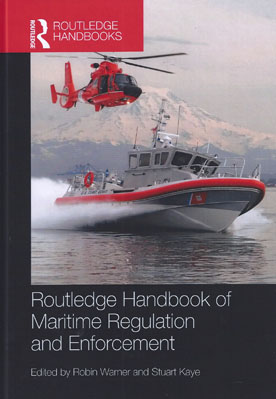
With advances in technology and maritime transport, the spectrum of human activities in all parts of the ocean and the deep seabed is steadily increasing.
A combination of factors means that human uses of the ocean now extend beyond the traditional activities of navigation and fishing to new and emerging activities such as bioprospecting for marine genetic resources, deep seabed mineral and hydrocarbon exploration and exploitation, offshore renewable energy developments and marine scientific probes of deep sea areas.
This handbook examines in depth current regulatory and enforcement instruments and mechanisms for different sectors of maritime activity in the various zones of maritime jurisdiction. The cornerstone of the international law framework for regulating these activities is the 1982 United Nations Convention on the Law of the Sea.
In the thirty years since its adoption, UNCLOS has been augmented with a growing array of more specific law and regulations governing activities at sea and accompanying enforcement mechanisms and this handbook engages with the full spectrum of maritime regulatory instruments. The specially commissioned chapters in this handbook are authored by some of the world's foremost authorities on maritime law and offer unique perspectives on maritime law, policy and practice.
The handbook addresses the prescriptive and enforcement powers of coastal States and the rights and freedoms of user States in different zones of ocean space. It also considers regulation and enforcement in the wider context of international law and policy including the relevance of maritime regulation and enforcement to national regional and global events. It goes on to identify gaps in the maritime and regulation enforcement fabric as well as future challenges in regulation and enforcement at sea.
This comprehensive reference work will be of interest to scholars and students of maritime law, practitioners and non-lawyers interested in the regulation of offshore areas, as well as policy-makers.